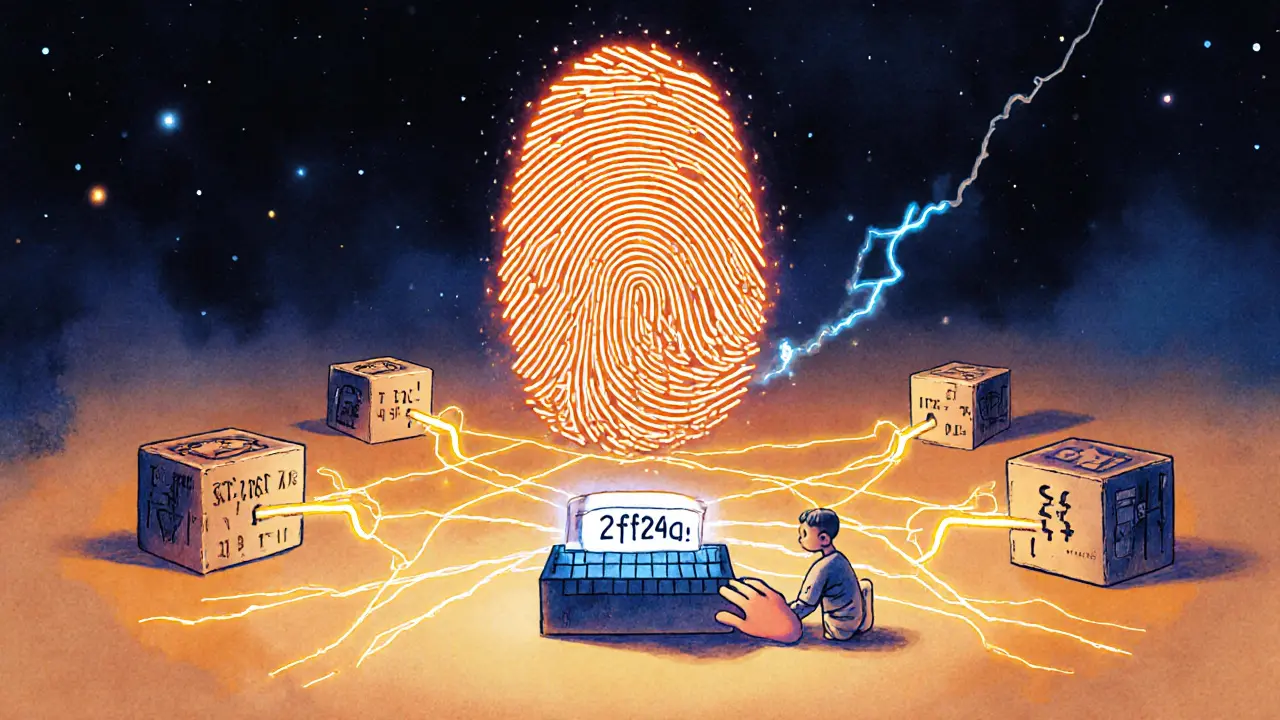Cryptographic Hashing Explained: How It Secures Bitcoin, Blockchains, and Crypto Exchanges
When you send Bitcoin or trade on a decentralized exchange, cryptographic hashing, a one-way mathematical function that turns data into a fixed-size string of characters. Also known as hash function, it’s what makes your crypto transactions impossible to tamper with. No one can reverse a hash to find the original data—once it’s hashed, it’s locked in. That’s why Bitcoin’s entire ledger runs on SHA-256, a specific type of cryptographic hash. If even one letter changes in a transaction, the hash changes completely. Miners use this to verify blocks, exchanges use it to store passwords safely, and airdrops use it to prove you owned a certain NFT without exposing your private key.
Think of it like a digital fingerprint. Your wallet address? A hash. Your transaction history? Hashed and chained together. Even the fake exchanges you see in our reviews—like EvmoSwap or BTC2.0—can’t fake a real hash. They copy names, but they can’t replicate the math that makes blockchain trust possible. That’s why you’ll find cryptographic hashing behind every legitimate crypto project listed here: from USDT.a’s cross-chain stability to the way Camelot V3 handles liquidity pools without central servers. It’s not just tech jargon—it’s the reason your coins don’t vanish when someone tries to cheat the system.
And it’s not just about security. SHA-256, the hash algorithm used by Bitcoin is also why mining exists—miners race to solve complex hash puzzles to add new blocks. Decentralized Identity (DID), a system letting you own your digital identity relies on hashing too, turning your personal data into unreadable codes you control. Even airdrops like the EGLD Maiar EarnDrop or WorldShards SHARDS token distribution use hashes to verify who qualified, without storing your email or wallet details. You don’t need to be a coder to understand this—but knowing how it works helps you spot scams faster. If a project claims to be "unhackable" but won’t explain its hashing, walk away. Real crypto doesn’t hide the math—it shows it off.
Below, you’ll find real-world breakdowns of how cryptographic hashing shows up in exchanges, tokens, and airdrops—sometimes clearly, sometimes hidden in plain sight. Some posts reveal how bad actors try to fake it. Others show how the best projects use it to build trust. You won’t find theory without practice here. Just the facts, the flaws, and the future of what keeps crypto secure.
